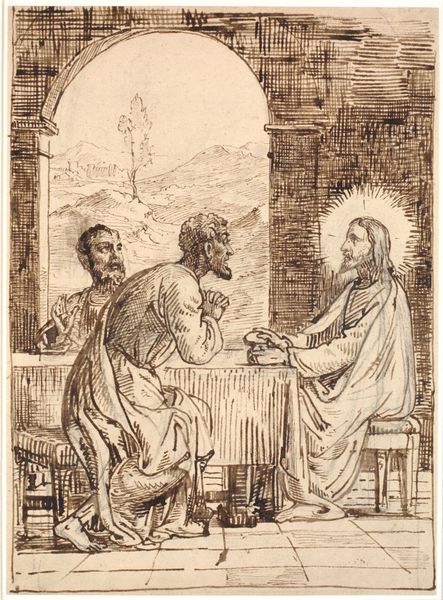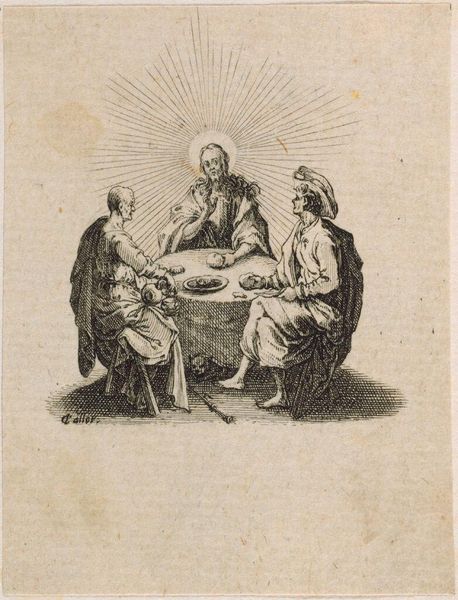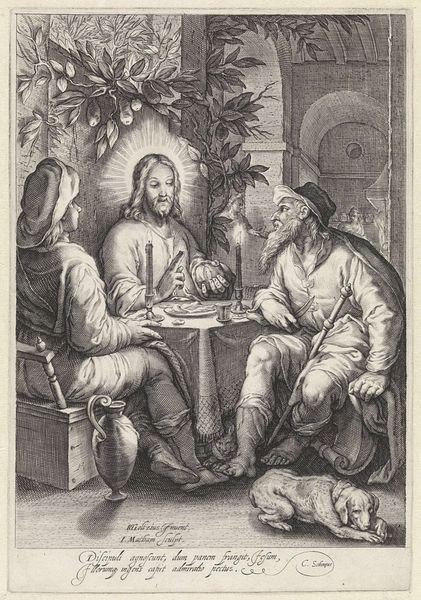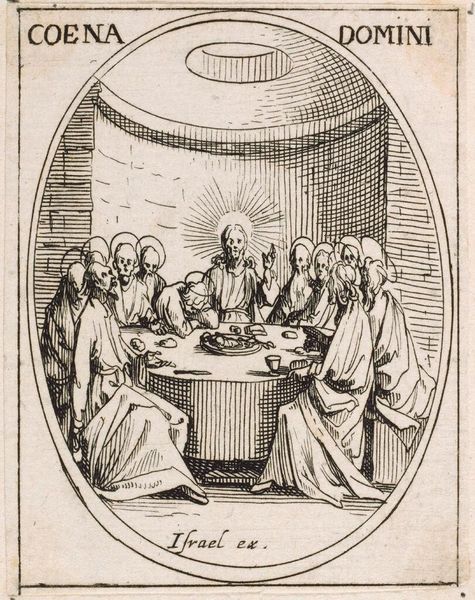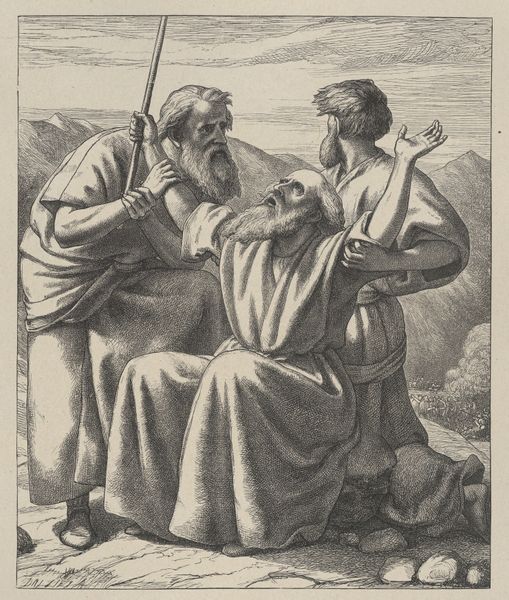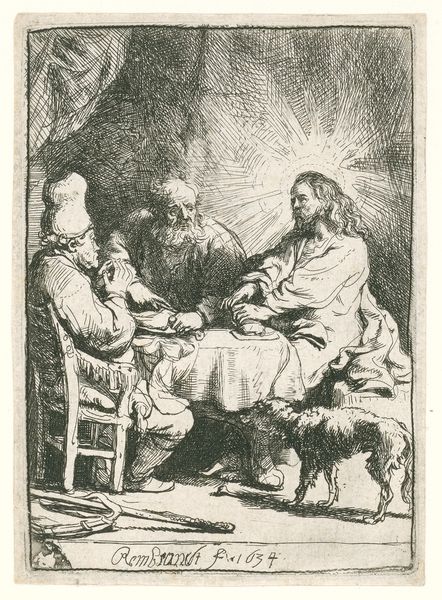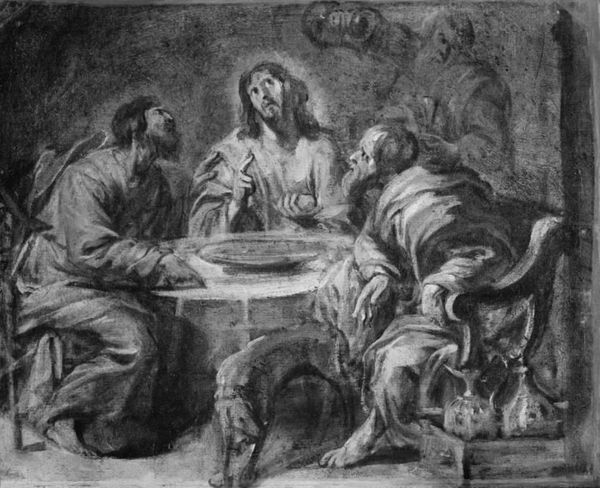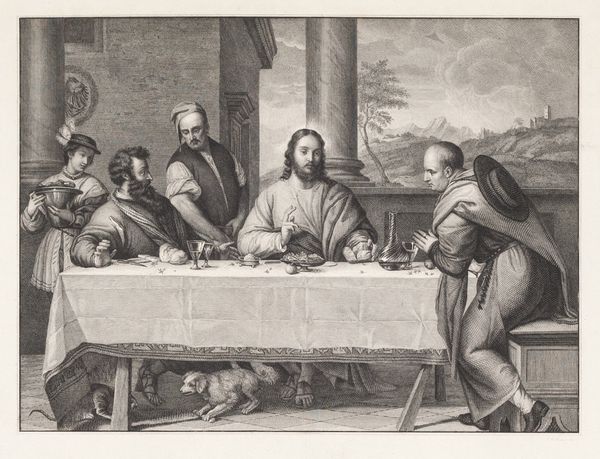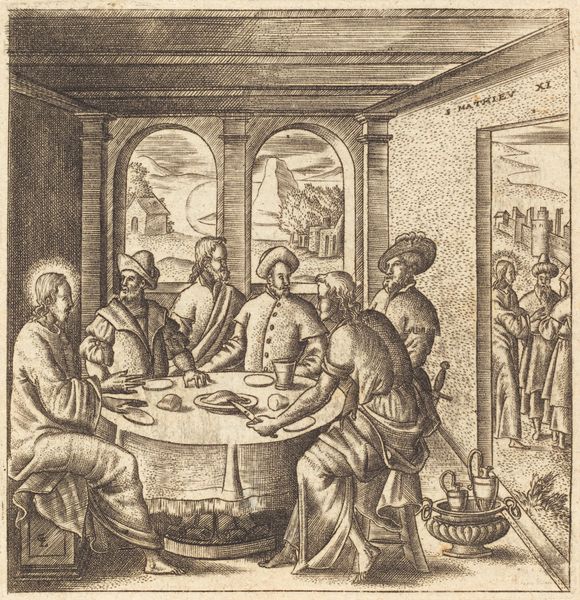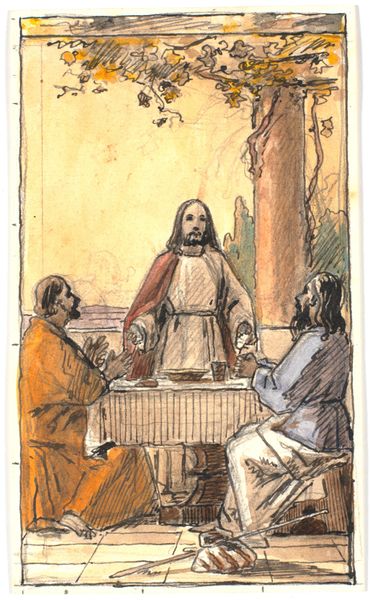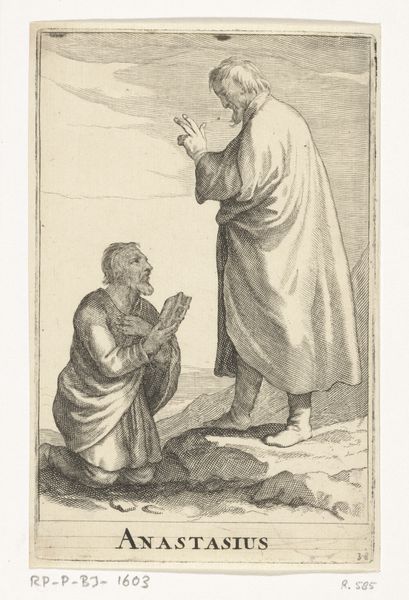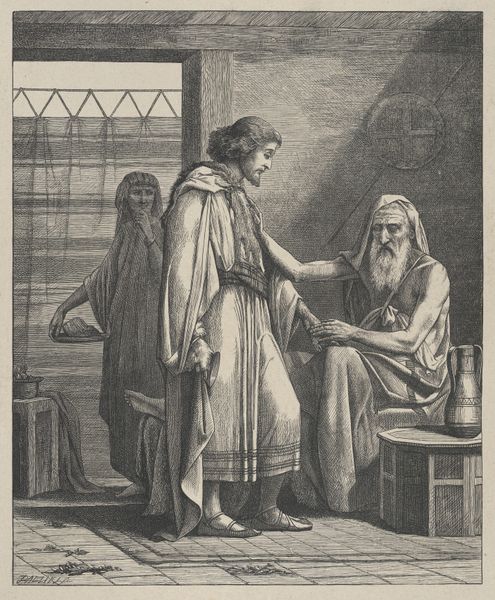
drawing, ink, pen
#
drawing
#
ink drawing
#
narrative-art
#
pen sketch
#
pencil sketch
#
ink
#
pen
#
history-painting
#
academic-art
Copyright: Public Domain: Artvee
Editor: Here we have Wilhelm Marstrand’s “Christus i Emaus,” made sometime between 1865 and 1965, created with pen and ink. The stark contrasts immediately give it a dramatic, almost haunting, quality. What kind of cultural significance do you see in this drawing? Curator: The scene depicts the biblical story of Christ's appearance to two disciples on the road to Emmaus. The table, the bread—these aren't just objects, but potent symbols. This image speaks volumes about recognition, faith, and the everyday made sacred. Notice the halo – a clear marker of divinity – but set against such an ordinary, almost rustic setting. Why do you think Marstrand chose to portray it in such a humble manner? Editor: Perhaps to emphasize the accessibility of faith, showing that the divine can be found even in mundane moments? It makes it less intimidating somehow. Curator: Exactly. The emotional weight lies in the act of realizing the divine in the familiar. Consider how the lines almost vibrate with anticipation. And look at the disciples' faces – they're etched with surprise, dawning comprehension. The artist masterfully conveys that pivotal moment of understanding, wouldn't you agree? Editor: I do. It is as though recognition itself is a tangible force in the scene, charging the air around them. Curator: It brings to mind how cultures, through symbols, have always strived to grasp the intangible. This artwork acts as a reminder that such pursuits are embedded in our visual language, echoing across centuries. Editor: Seeing the artwork framed as a continuous narrative of faith and cultural memory adds so much more depth than I initially grasped. Curator: Indeed. And thinking about the symbols that persist, and why, that is part of understanding humanity.
Comments
No comments
Be the first to comment and join the conversation on the ultimate creative platform.
